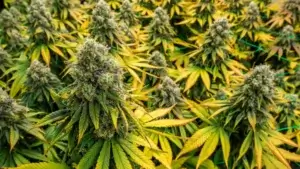Definition:
An insecticide is a substance or solution used to kill or manage insect pests that can damage cannabis plants, ensuring healthy growth and maximizing yield.
Purpose and Usage
Insecticides are essential in cannabis cultivation for protecting plants from pests such as spider mites, aphids, and whiteflies. They help prevent crop loss, improve plant health, and ensure compliance with quality standards in commercial cannabis production.
How It Relates to Cannabis
- Common Insect Pests in Cannabis:
- Spider mites
- Aphids
- Thrips
- Whiteflies
- Fungus gnats
- Types of Insecticides Used in Cannabis Cultivation:
- Chemical Insecticides: Synthetic solutions effective against a wide range of pests but require careful application to avoid harmful residues.
- Organic or Natural Insecticides: Derived from natural sources, such as neem oil or pyrethrin, these are safer for plants and consumers.
- Biological Insecticides: Use beneficial microorganisms or predators to control pests naturally.
- Steps for Using Insecticides:
- Identify the pest affecting the cannabis plants.
- Choose an appropriate insecticide based on pest type and growth stage of the plant.
- Apply the insecticide according to manufacturer guidelines, focusing on areas where pests are present.
- Monitor plants for any signs of improvement or adverse effects.
- Reapply as needed, ensuring proper intervals between treatments.
- Best Practices:
- Use insecticides sparingly to minimize residue on consumable cannabis products.
- Opt for organic or biological insecticides to align with health and environmental standards.
- Avoid application during flowering to reduce risks of contamination in buds.
Common Misconceptions
- All insecticides are harmful to cannabis consumers: Many insecticides, especially organic ones, are safe when used correctly and degrade before harvest.
- Insecticides can be used at any time: Applying insecticides during flowering can leave unwanted residues on buds.
- Pests only affect outdoor plants: Indoor cannabis grows can also face infestations, making pest management necessary in all environments.
Alternatives
- Integrated Pest Management (IPM): Combines cultural, biological, and mechanical methods to reduce reliance on insecticides.
- Beneficial Insects: Introducing predatory insects like ladybugs or praying mantises to control pests.
- DIY Solutions: Homemade sprays using soap, garlic, or essential oils for mild infestations.
Importance of Insecticide
Insecticides play a critical role in cannabis cultivation, safeguarding plants from pests that can harm yields and quality. Proper use ensures healthy growth, protects investments, and meets consumer safety standards. With the growing demand for organic and chemical-free cannabis products, the selection and application of insecticides have become more focused on sustainability and health compliance.





